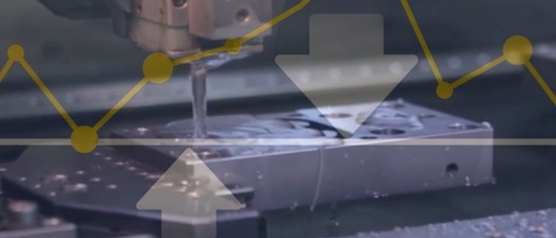Metal stamped parts may appear to be just a small component of the larger product, but they can have a significant impact on a manufacturer’s bottom line in terms of costs, cycle time, and product reliability. When designed and produced in the most cost-effective manner, metal stampings can help reduce product costs, cut production time, and enhance product life.
OEMs that incorporate metal stampings in their products range from medical device and electronics manufacturers that need micro-miniature parts made from extremely thin material to automobile manufacturers requiring components made of high strength steel alloys. The insert molding industry also requires complex metal stampings that deliver high performance and tight tolerances. In short, no two metal stamping projects are alike, but each depends upon following the same steps for success.
Manufacturers who require precision metal stampings can benefit from understanding how to optimize the metal stamping process and reduce costs. This article is the first in a series of blog articles that will cover the 13 steps that OEMs should follow to ensure their metal stamped part will perform to their exacting specifications. This post focuses on steps 1 - 3.
Step 1. Get the metal stamping design right from the start
If engineers at metal stamping firms had just one wish to make the process go more smoothly, it would be for the manufacturer to involve them very early in the part design process.
Often times, CAD drawings are unrealistic and don’t take into account the limitations of metal stamping. In fact, the metal stampings that perform best are based on Collaborative Product and Process Design, which allows the metal stamper to interpret the client’s specifications in light of optimal metal stamping design and production, including assessment of materials and part tolerances.
Metal stamping engineers may propose design improvements that lead to significant savings in production time and expense – from something as simple as changing the way parts are packaged to save on assembly costs to complex changes such as reconfiguring a part to eliminate unnecessary steps in the overall manufacturing process and drive down expenses.
For example, one large manufacturer brought in representatives from all of their outside suppliers involved in producing a key component, including molders, stampers and electronics specialists, to design the parts as a team. As a result, the metal stamping was redesigned to make the part less expensive to produce and easier to assemble.
Step 2. Forecast your requirements
It is best to be upfront about your anticipated requirements for the part and its final assembly, including your projected volumes and release frequency for the year. Talk to your stamper about the impact shipping frequency may have on overall costs
If you share the full scope of the manufacturing process from how you assemble parts through the final assembly, the metal stamping engineers may be able to propose changes or redesign the metal stamping to reduce part cost and make it easier to manufacture. If the metal stamping engineer understands your assembly process, the part may be designed with features that will save on additional handling. For example, a metal stamping can be designed to stack at the press in the orientation you need to prevent secondary handling and reduce costs.
Your anticipated production volume has a bearing on how a stamping is produced and its cost. Low volume products do not require as robust tooling as do high volume products.
Manufacturers are often surprised by the amount of lead time required for a metal stamping. Although rush projects can be handled in a matter of weeks, a realistic manufacturing schedule should allow several months for part design review/modification, tool design, material orders, and production ramp-up.
Step 3. Evaluate critical tolerances of the metal stamping
Tolerances in metal stampings are the permissible variations from a specification for any characteristic of the part, which can be a point of misunderstanding with manufacturers.
Some OEMs will specify the tightest tolerances as a general rule, with the idea that tighter tolerances are always better and reduce the risk of part failure. However, the tighter the tolerance, the more expensive the part is to produce, because the metal stamper will have to spend more time developing the die and maintaining it to specifications. Of course, a good metal stamper will be able to achieve tight tolerances and high precision when required.
Manufacturers and metal stampers should work together to understand the importance of tolerances in metal stampings and how much variance will work for the part’s production process and end use. The metal stamper’s engineers can collaborate with the OEM’s engineers to determine the most critical areas of the part, as it relates to form, fit and function, and determine appropriate tolerances based on those criteria.
Learn more about maximizing the metal stamping process
You can read more about the importance of collaborative design and critical tolerances in metal stamping in “Metal Stampings Have Limitations – Keep Them in Mind when Designing Your Part.”
Coming Up ...
Stay tuned for our next blog article, which will cover steps four through seven of the 13 Critical Steps to Ensure Metal Stamping Success:
- assessing the dimensions for final assembly
- forecasting production volumes
- selecting the best material for the application, and
- planning for secondary operations.
Subscribe to our blog to ensure you don't miss it.


